By Alex Trukan
There are many ways to get the ball into opposition’s half. Some of the teams prefer a direct approach getting a long pass played from the own goalkeeper, others strongly believe in a patient build up through the thirds. What becomes more and more popular is a combination of these two styles. Teams influenced by Ralf Rangnick, Jürgen Klopp or Thomas Tuchel often get the ball played out short into centre backs to then get into opposition half within just couple of passes on the ground, most of them hopefully breaking the opposition units. This is why, when using this approach, centre backs and defensive midfielder have to be able to make penetrative passes into strikers and attacking midfielders. Players in front of the ball in turn will need to possess excellent movements off the ball to create space for others and to receive themselves. This what I call ‘direct possession’ style is not only exciting to watch, but also as many teams have proven, very effective.
As the back line established possession, defensive midfielder would be looking to drop between centre backs. Forming a back three gives more options to move the ball sideways in case forward options are not available. It also off loads central areas of the pitch, creating more space for the ball being played into strikers. All of the back three players should be looking for a through ball into most advanced player on the pitch. The ball should be moved quickly and played off one and two touches. However, change of tempo should be also considered.
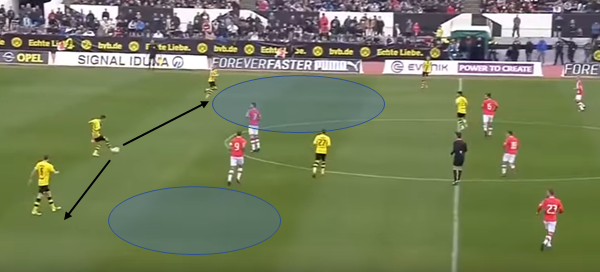
If the immediate pass forwards is not available, and the ball is moved sideways, there might be spaces arising for centre back to drive forwards. This will change the picture and create a better angle to penetrate. As the centre back drives forwards, he will often go past the strikers unit, reducing the number of units to beat with a pass to only one. Players in front of the ball seeing centre back driving with the ball should make movements to receive. This is a trigger for them to react off.
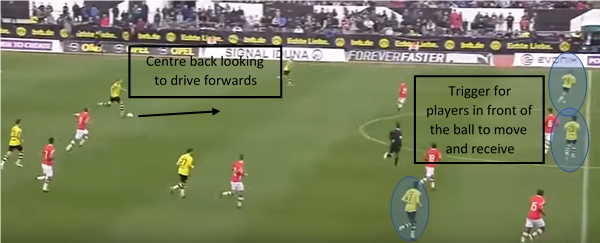
Central midfielders and strikers should be looking to operate on different angles, however, the distances between them can’t be longer than 5-10 yards. This will help them to combine play and play off one touch as the ball is played forwards. Every player in front of the ball should have an option to play off one touch if the through pass finds him.
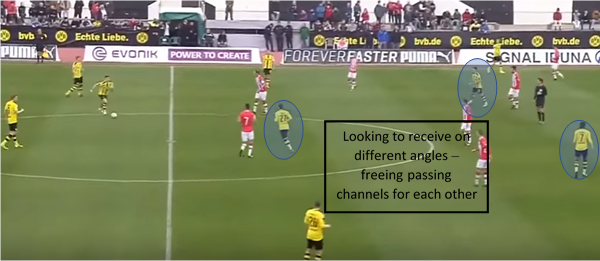
One of the patterns used a lot by teams preferring this style of play is based on two central midfielders coming towards the ball to then open up spaces in behind them. This will trigger a penetrative pass played into striker. As soon as the pass is played, both midfielders should turn quickly and support the striker offering an option for a one-two. Attacking players will have an advantage over defenders as they will recognise the pattern and be in a proactive rather than reactive mode.
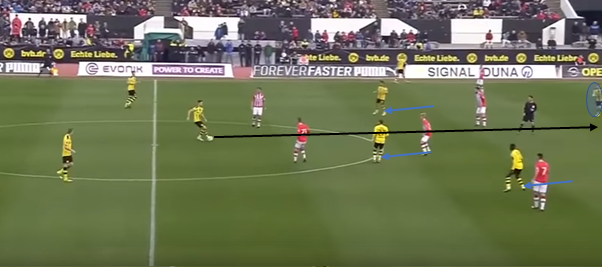
Opposite type of combination is when winger or striker comes deeper to receive between the lines and one of the central midfielders goes beyond him to fill in the spaces. This is a less direct option with emphasis on combination play with midfielder in latter stages as striker gets on the ball.
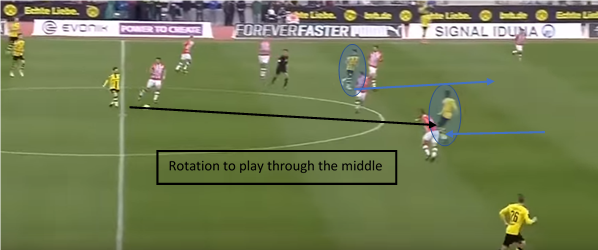
Another specific characteristic is overloading channels where the ball is. On a various occasions it can be noticed that there are significant number of players positioned in the spaces in front of the ball. This mainly happens in the central channel but also at times can be noticed on the wings. Overloading areas in front of the ball helps to create quick combination play and get the ball forwards. It also drags the opposition into ball side and opens up spaces on the opposite side of the pitch in case a switch of play is required.
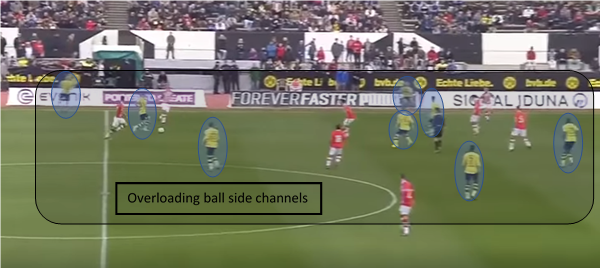
Overloading areas in front of the ball is characteristic for Klopp’s as well as Tuchel’s teams. This is due to their preferred way of defending which is immediate press after losing the ball (gegenpressing). Having players around the ball reduces the risks of being out of balance when the ball is lost. This is especially important when trying to play through balls breaking units as they can be easily intercepted.
By Alex Trukan, Development Coach, Nottingham Forest
@AlexTrukan


